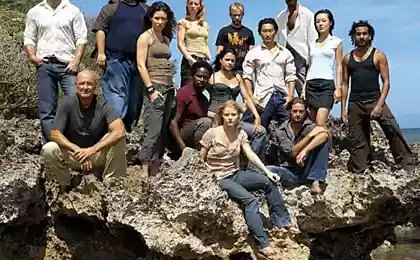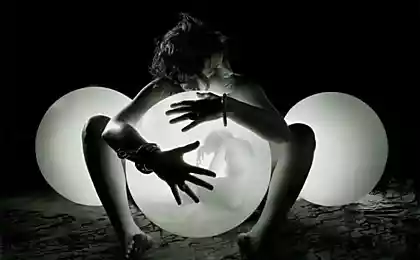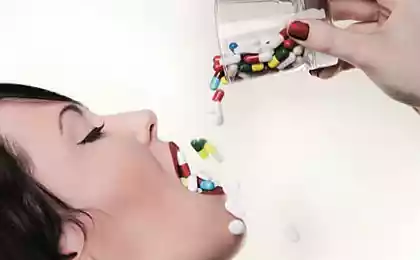172
Under the Union, these products were loaded with scarce goods, and we are ready to give them the last money.
To defend a long queue and grab a scarce product is a vivid episode from the chronicles of our life in the USSR. Surprisingly, neither a jar of black caviar, nor expensive by today's standards, Kamchatka crabs did not seduce the Soviet man. People hunted for the Yugoslav wall, imported boots and coats, good sausage and canned food.
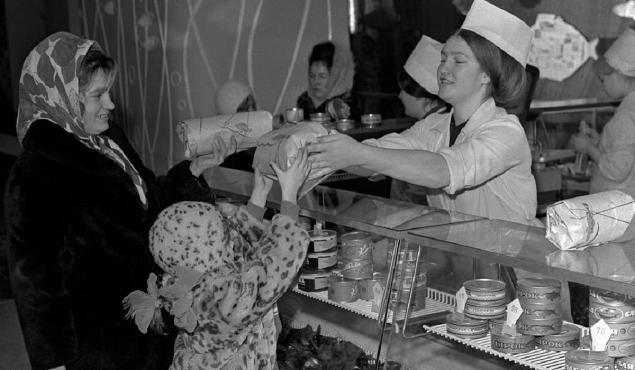
At this time, the shelves of stores were full of delicacies that no one wanted to take for free. In order to fulfill the State Sales Plan, such goods were loaded along with the deficit. I wish I could go back in time and pick up the full asses of these delicacies!
In the 1960s, the Union produced 93% of sturgeon and beluga caviar worldwide. In other words, eat your health! However, they took it without much enthusiasm even at a conditionally modest price - 4 rubles. for 1 kg. Preference was given to red caviar.

To fulfill the sales plan, black caviar was given in a load with scarce mayonnaise and canned food - sprats and peas. There was nothing to do, I had to invent: the snack was not eaten a teaspoon, but was added to salads and fed to children to increase the level of iron in the blood. Many who were forcibly taught in childhood to such a “diet”, today do not tolerate black caviar on the spirit!
Since the 1930s, the USSR persistently mined huge Kamchatka crabs, preserved and tried to instill in them the love of the population. Alas, without much success. The Soviet people had a distaste for sweet meat and did not fight even at a modest price.
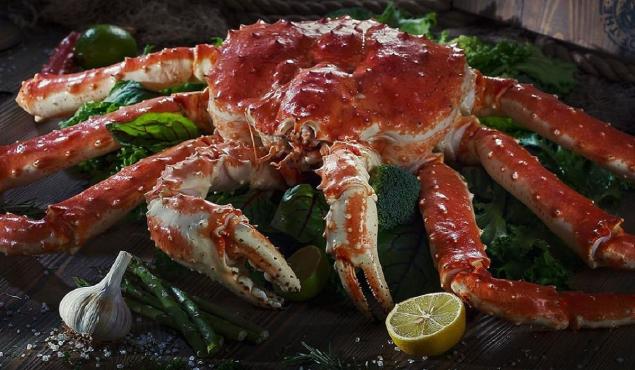
Instagram has tried advertising. So there was a poster with a girl who gladly weaves a crab cake, and the slogan: “It’s time for everyone to try how tasty and tender crabs are.” However, many people did not dare to taste them at least once.
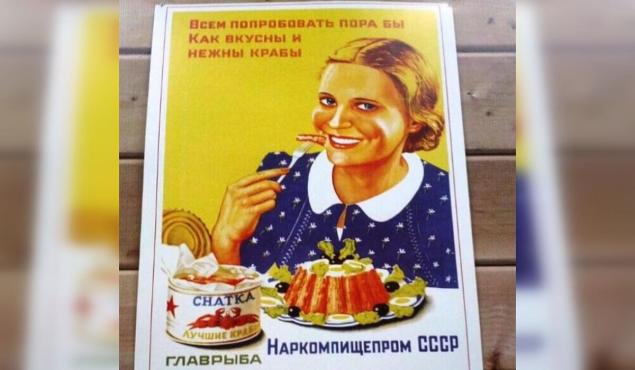
Instagram Why was there so much crab meat? The fact that the Union for a long time fought with Japan for the right to become the world’s main exporter of delicacy, but lost in the fight. Most countries preferred Japanese products, and domestic crabs remained on the domestic market. That is why crab canned food was in abundance and left the shelves only in the load. By the way, today a kilogram of meat of Kamchatka crab costs 50-70 US dollars.
The famous “Songs” with trepidation sang this sweet forest drink, and the homeland generously supplied it to its people. You could buy birch juice for pennies in any food store, on a spill or in 3-liter cans. Many of them mined it on their own in the forests. Birch juice filled store shelves in excess even during perestroika as one of the last strongholds of stability.

The drink was enjoyed by children, and adults bought it for scarce cans to roll cucumbers and tomatoes. These days, birch juice has left the budget segment, and some restaurants serve it as an elite drink.
Iodine-rich brown algae did not appeal to the inhabitants of the USSR. People were more willing to take scarce buckwheat, and the load received a salad "Far Eastern". Unappetizing appearance and strange taste overlapped all the advantages of the Soviet superfood. To somehow attach illiquid, Soviet housewives added seaweed to salads to eggs, boiled rice and onions, generously flavoring with sour cream or mayonnaise.
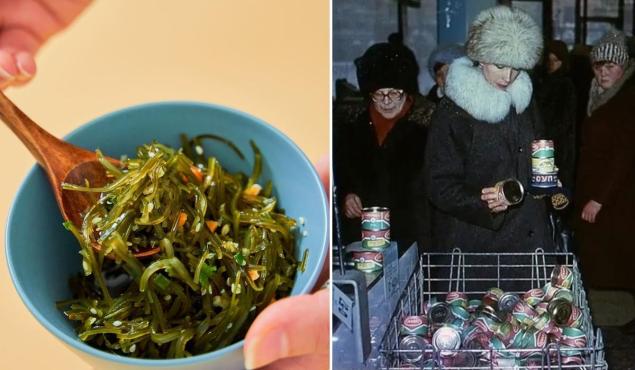
Forced familiarity with useful algae today seems strange to us. Every fan of healthy eating knows that kelp is useful for the thyroid gland, strengthens hair, nails, teeth and improves bowel function. He knows and is willing to pay a lot of money for it. Oh times, manners!
Photo at preview and in article

At this time, the shelves of stores were full of delicacies that no one wanted to take for free. In order to fulfill the State Sales Plan, such goods were loaded along with the deficit. I wish I could go back in time and pick up the full asses of these delicacies!
In the 1960s, the Union produced 93% of sturgeon and beluga caviar worldwide. In other words, eat your health! However, they took it without much enthusiasm even at a conditionally modest price - 4 rubles. for 1 kg. Preference was given to red caviar.

To fulfill the sales plan, black caviar was given in a load with scarce mayonnaise and canned food - sprats and peas. There was nothing to do, I had to invent: the snack was not eaten a teaspoon, but was added to salads and fed to children to increase the level of iron in the blood. Many who were forcibly taught in childhood to such a “diet”, today do not tolerate black caviar on the spirit!
Since the 1930s, the USSR persistently mined huge Kamchatka crabs, preserved and tried to instill in them the love of the population. Alas, without much success. The Soviet people had a distaste for sweet meat and did not fight even at a modest price.

Instagram has tried advertising. So there was a poster with a girl who gladly weaves a crab cake, and the slogan: “It’s time for everyone to try how tasty and tender crabs are.” However, many people did not dare to taste them at least once.

Instagram Why was there so much crab meat? The fact that the Union for a long time fought with Japan for the right to become the world’s main exporter of delicacy, but lost in the fight. Most countries preferred Japanese products, and domestic crabs remained on the domestic market. That is why crab canned food was in abundance and left the shelves only in the load. By the way, today a kilogram of meat of Kamchatka crab costs 50-70 US dollars.
The famous “Songs” with trepidation sang this sweet forest drink, and the homeland generously supplied it to its people. You could buy birch juice for pennies in any food store, on a spill or in 3-liter cans. Many of them mined it on their own in the forests. Birch juice filled store shelves in excess even during perestroika as one of the last strongholds of stability.

The drink was enjoyed by children, and adults bought it for scarce cans to roll cucumbers and tomatoes. These days, birch juice has left the budget segment, and some restaurants serve it as an elite drink.
Iodine-rich brown algae did not appeal to the inhabitants of the USSR. People were more willing to take scarce buckwheat, and the load received a salad "Far Eastern". Unappetizing appearance and strange taste overlapped all the advantages of the Soviet superfood. To somehow attach illiquid, Soviet housewives added seaweed to salads to eggs, boiled rice and onions, generously flavoring with sour cream or mayonnaise.

Forced familiarity with useful algae today seems strange to us. Every fan of healthy eating knows that kelp is useful for the thyroid gland, strengthens hair, nails, teeth and improves bowel function. He knows and is willing to pay a lot of money for it. Oh times, manners!
Photo at preview and in article
My parents have a late child, I love them very much, but now it turns out that I have to sacrifice everything for them.
In order for luck to be with you all year, on the day of the Honey Savior, eat one spoonful of honey and say simple words.



